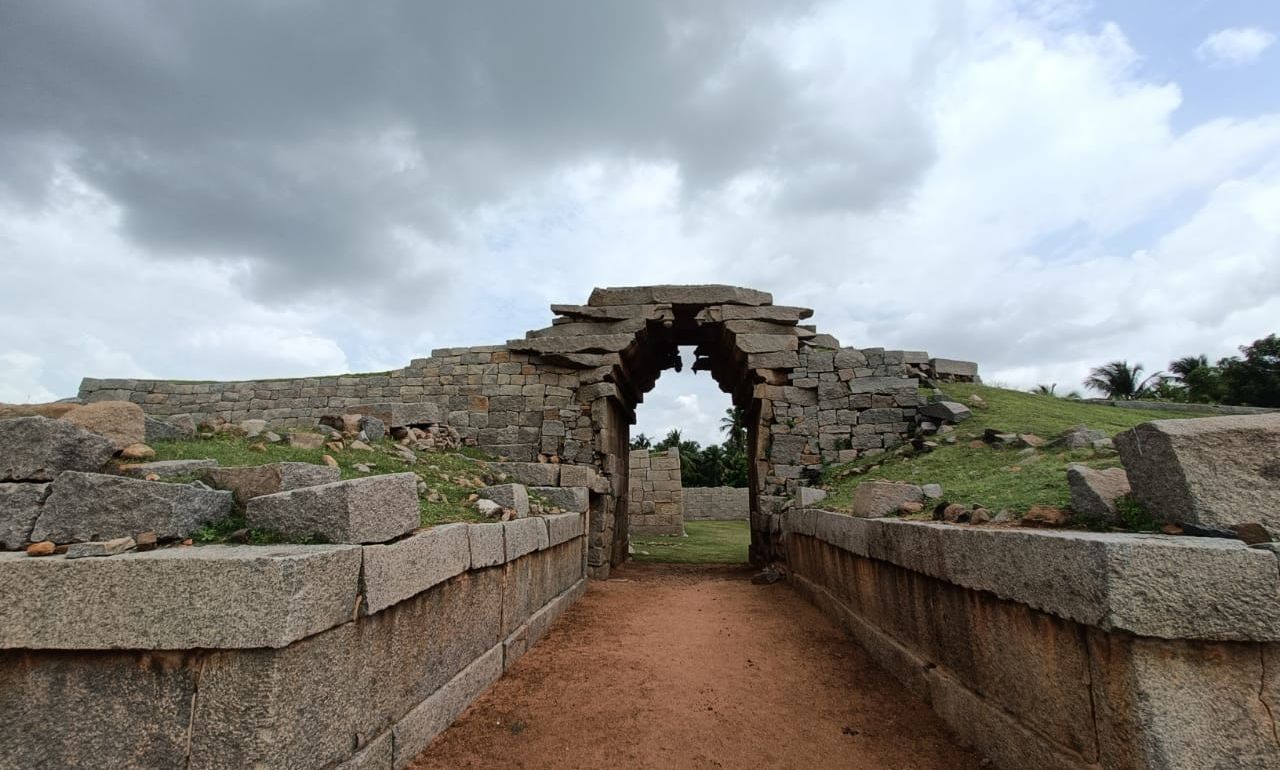Hampi Ruins in the 1900s — The Gateways into the City
Published on: 01/09/2022
Published on: 01/09/2022

Talarigatta Gate

Bhima’s Gateway

Nicholas Rixon's work has appeared in The Indian Quarterly, Scroll, The Statesman, Hindustan Times and The Assam Tribune, among others. He currently lives in New Delhi and is working on his debut collection of short stories.

STORY TITLE GOES HERE

STORY TITLE GOES HERE
Craft Calling: Traditional Lambani Arts and Crafts and the Sandur Kushala Kala Kendra
The Path of a Downfall: Movements that Led to the Collapse of the Vijayanagara Empire
Hampi Ruins in the 1900s: Stellar Photographs From A Forgotten Historical Text
North Karnataka’s Threesome — Badami, Aihole, & Pattadakallu
Hampi Ruins in the 1900s — The Gateways into the City
The cute little denizens of the Kamalapura Palace, Hampi
From the Kitchens of Evolve Back – Jallad Roti | Akki Roti
From the Kitchens of Evolve Back – Qubani ka Meetha and Shahjahani ka Meetha
From the Kitchens of Evolve Back – Murgh-e-Lazeez
From the Kitchens of Evolve Back – Nizami Machali ka Salan
From the Kitchens of Evolve Back – Dum ki Nalli
From the Kitchens of Evolve Back – Anapa Ginjala Pulusu
From the Kitchens of Evolve Back – Raan-e-Kamalapura
From the Kitchens of Evolve Back – Baghara Baingan
From the Kitchens of Evolve Back – Natukodi Pulusu
From the Kitchens of Evolve Back – Tondekai Palya
From the Kitchens of Evolve Back – Royala Igaru
From the Kitchens of Evolve Back – Koli Chuttada
From the Kitchens of Evolve Back – Karibelle Cutlet
The Battle of Talikota and the Sacking of Hampi
From the Kitchens of Evolve Back – Kori Ghee Roast
Harihara & Bukka: founders of the Vijayanagara Empire
The Battle of Raichur: The Beginning of the End